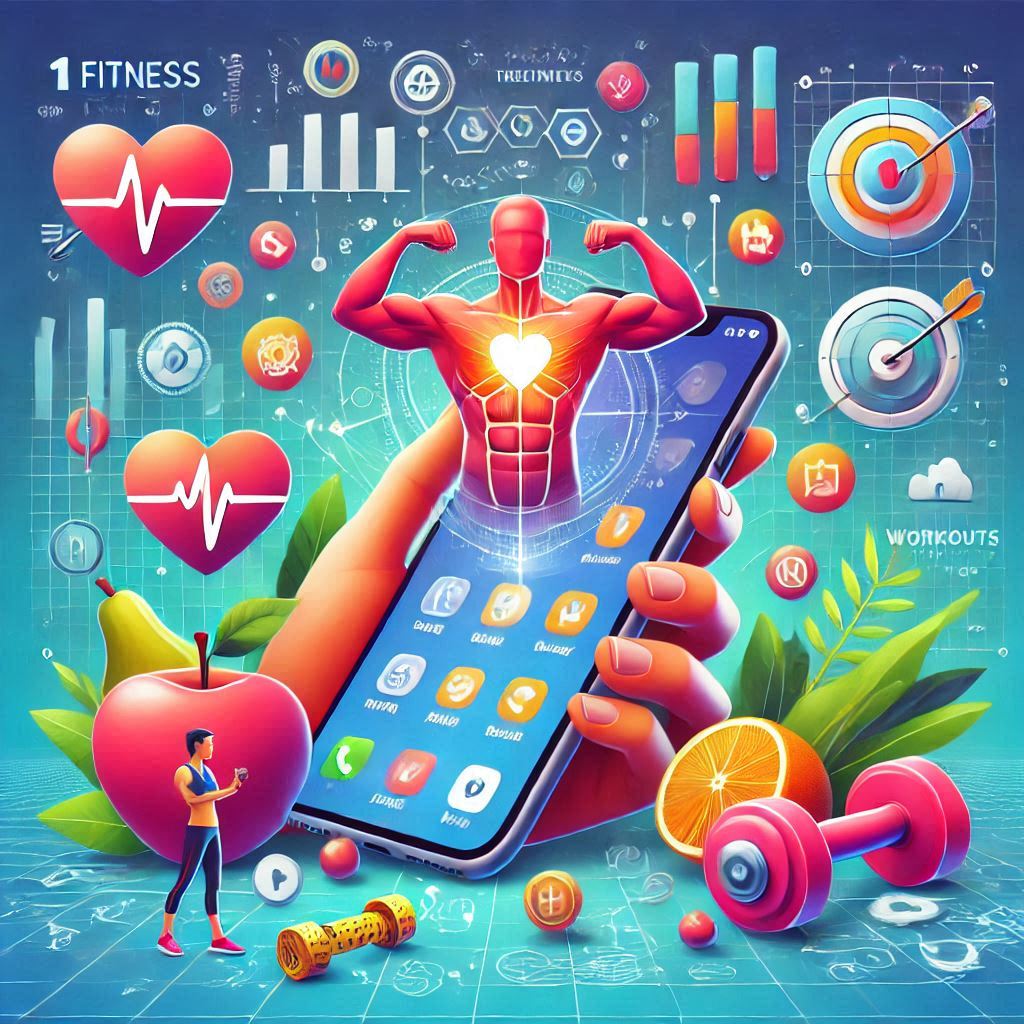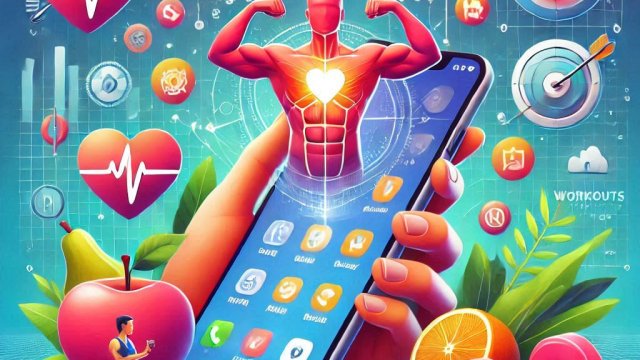
In a world where fitness is more accessible than ever, choosing the right app can feel overwhelming. I remember when I first started my fitness journey, I was bombarded with options, each promising to be the best. With countless apps out there, it’s crucial to find one that truly stands out and meets your unique needs.
So what is the #1 fitness app? This question isn’t just about popularity; it’s about effectiveness, user experience, and how well it fits into our busy lives. As I dive into the features, benefits, and user feedback, I’ll uncover which app rises above the rest and why it could be the game-changer you’ve been searching for.
Understanding Fitness Apps
Fitness apps have revolutionized the way I approach health and fitness. They serve as valuable tools for tracking workouts, monitoring nutrition, and providing personalized coaching. With an array of features, these apps help users stick to their goals and maintain an active lifestyle.
Key Features of Fitness Apps
- Workout Tracking: Most fitness apps provide options for tracking various activities like running, cycling, and strength training. Users can log workouts, monitor duration, and observe progress over time.
- Nutrition Logging: Many apps allow users to track their food intake. By logging meals, users can gain insights into their dietary habits, making it easier to manage nutrition based on their fitness goals.
- Goal Setting: Fitness apps often include features that help set and achieve goals. Whether it’s aiming for a specific weight or completing a particular workout routine, these apps keep users motivated.
- Personality Integration: Advanced apps personalize fitness plans based on user preferences and fitness levels. This customization makes workouts more enjoyable and aligned with individual health goals.
- Social Connectivity: Many apps offer social features that let users share achievements and compete with friends. This community aspect boosts motivation and accountability.
Popular Types of Fitness Apps
- Running Apps: These focus on tracking running distance, pace, and other running statistics. Popular options include Strava and Runkeeper.
- Strength Training Apps: These apps provide various workout plans, including weightlifting routines and bodyweight exercises. Examples are StrongLifts 5×5 and JEFIT.
- Yoga and Mindfulness Apps: Apps like Headspace and Down Dog cater to yoga enthusiasts and those seeking relaxation and mental wellness.
- Nutrition Tracking Apps: MyFitnessPal is a go-to app for tracking calorie intake, macronutrients, and meal planning.
- Comprehensive Fitness Apps: Certain apps, like Fitbit and Apple Health, combine multiple features, tracking everything from workouts to sleep patterns.
Selecting the Right Fitness App
Choosing the right fitness app can be daunting given the vast number of options available. I consider a few key factors to simplify the process:
- User Experience: I look for apps that are intuitive and easy to navigate. A cluttered interface can lead to frustration.
- Compatibility: Ensuring the app works seamlessly with my smartphone or smartwatch is essential. Apps should ideally sync with fitness trackers for accurate data.
- Features: Depending on my specific needs, I assess whether the app offers the features I’m looking for, be it workout tracking or nutrition logging.
How Fitness Apps Enhance My Fitness Journey
Fitness apps help me stay on track by providing insights into my performance. They turn my fitness goals into measurable, achievable objectives. By using an app, I can track my progress, evaluate what works, and adjust my routines accordingly. Additionally, the ability to connect with friends and share achievements makes my fitness journey more enjoyable and motivating.
With the right fitness app, I’ve noticed a significant improvement in my overall health and fitness levels. Whether I’m checking my daily step count or logging my meals, these apps have become critical components of my wellness routine.
Evaluating Fitness App Features
I find that when it comes to choosing the best fitness app, it’s essential to evaluate a range of features that enhance the user experience and effectiveness. Here are some key aspects I consider important to my fitness journey.
User Interface and Experience
I believe a user-friendly interface is crucial for any fitness app. It should allow me to navigate easily through functions like tracking workouts, logging meals, or setting goals. A clean design with intuitive menus helps me focus on my fitness rather than figuring out how the app works. It’s also beneficial if the app offers customization options, allowing me to organize my home screen based on what features I use most. If it feels cluttered or confusing, I’m less likely to stick with it.
Workout Variety and Customization
I love apps that offer a wide range of workout options, catering to different fitness levels and preferences. Whether it’s yoga, strength training, or running, having diverse routines keeps my workouts fresh and engaging. Customization features, such as the ability to create personalized workout plans or adjust existing ones, enhance my experience. Some apps even allow me to specify my fitness goals, like building muscle or losing weight, which leads to tailored suggestions—making it far more effective.
Nutrition and Meal Planning
I find nutrition tracking to be a game changer in my fitness app experience. An ideal fitness app should provide a robust food diary that allows me to log meals easily, ensuring I’m meeting my nutritional goals. Features like barcode scanning for food items and a database of recipes save me time and add convenience. I appreciate apps that also facilitate meal planning, helping me organize my grocery list based on my weekly meals. When I can track my caloric intake alongside my workouts, it helps me better understand the correlation between diet and performance—a vital aspect of any fitness journey.
Exploring Popular Fitness Apps
I’ve found that understanding the landscape of fitness apps is crucial when searching for the perfect one. Below, I’ll dive into three standout options, detailing their features and what sets them apart.
App #1: Overview and Key Features
MyFitnessPal is a leading app for nutrition tracking and fitness planning. This app allows users to log food intake and workouts seamlessly. It includes a database of over 11 million foods, making it easy to track calories and nutrients. Customizable goals help me focus on macro and micronutrient targets.
Key features include:
- Barcode Scanning: Quickly log food by scanning barcodes.
- Integration Capabilities: Syncs with devices like Fitbit and Apple Watch to track activity.
- Community Support: Engaging forums provide motivation and tips from fellow users.
App #2: Overview and Key Features
Strava is the go-to app for runners and cyclists. I love how it tracks my workouts with GPS, offering detailed statistics on distance, pace, and elevation. The leaderboard feature adds a competitive element, motivating me to push my limits.
Key features include:
- Segment Tracking: Compare my performance against others on specific routes.
- Safety Features: Beacon functionality allows friends and family to track my activity in real-time.
- Training Plans: Customizable plans cater to different fitness levels, helping me prepare for events.
App #3: Overview and Key Features
Nike Training Club focuses on providing a comprehensive workout experience. I appreciate its diverse range of training programs tailored to various fitness levels and goals. The app includes both bodyweight workouts and routines that utilize equipment.
Key features include:
- Workout Variety: Hundreds of guided sessions from expert trainers.
- Personalized Recommendations: Offers workouts based on my fitness level and preferences.
- Premium Content: Access to expert advice on nutrition and recovery, enhancing my overall fitness journey.
Determining What is the #1 Fitness App?
Finding the top fitness app involves analyzing user feedback, expert advice, and feature comparisons. It’s essential to consider various elements such as usability, effectiveness, and the unique offerings of each app.
User Feedback and Reviews
User feedback plays a crucial role in determining the best fitness app, as it reflects real-life experiences and satisfaction levels. I’ve noticed that apps like MyFitnessPal, Strava, and Nike Training Club consistently receive positive reviews for their features and user engagement.
Users often appreciate how MyFitnessPal’s extensive food database allows for precise nutrition tracking, making it a favorite for those looking to manage dietary intake. Strava finds favor among runners and cyclists due to its GPS tracking and community aspects that motivate users through social sharing of achievements. Nike Training Club stands out with its diverse workout plans, personal recommendations, and user-friendly interface.
Many reviews point out the importance of app compatibility with devices. Users have mentioned that seamless connections to smartwatches improve tracking accuracy. When looking for the #1 fitness app, I focus on user ratings from platforms like Google Play and the Apple App Store, where scores can indicate reliability.
Expert Recommendations and Ratings
Expert recommendations often help narrow down choices and add credibility to app selections. Many fitness professionals frequently endorse MyFitnessPal for its comprehensive approach to nutrition and exercise tracking. Fitness experts highlight how its integration with various fitness trackers enhances its effectiveness, addressing the question: Is there a fitness tracker better than Fitbit?
When examining the best fitness tracker in the world, reviews by cardiologists often favor models like the Apple Watch for their heart monitoring abilities. They recommend wearables with ECG features that can detect heart problems, emphasizing the significance of health tracking in fitness apps. This leads to another pertinent question: Which smartwatch do cardiologists recommend?
In professional surveys, Strava consistently ranks high for outdoor enthusiasts because of its focus on community and performance metrics. Experts note that the motivation derived from seeing progress through shared experiences can enhance user commitment.
Reliable insights and scores from reputable fitness websites, along with user testimonials, help me determine what is the #1 fitness app. Ultimately, it’s essential to align expert opinions with my personal fitness goals and preferences, ensuring I choose an app that truly supports my journey toward optimal health and fitness.
Conclusion
Choosing the right fitness app can truly elevate your health journey. I’ve seen firsthand how the right tools can make a difference in achieving fitness goals. With options like MyFitnessPal, Strava, and Nike Training Club, there’s something for everyone depending on your needs and preferences.
These apps not only track workouts and nutrition but also foster a sense of community and motivation. As I continue to explore and utilize these resources, I’m excited to see how they can further enhance my fitness experience. Finding the perfect app might just be the key to unlocking your potential and reaching your health goals.
Frequently Asked Questions
What are the benefits of using a fitness app?
Fitness apps help track workouts, monitor nutrition, and provide personalized coaching. They are designed to simplify your fitness journey, helping you set goals, stay motivated, and measure progress effectively. Many apps also offer community support, making it easier to stay accountable and connect with others.
How do I choose the right fitness app for me?
To choose the ideal fitness app, consider factors like user experience, compatibility with your devices, and the specific features you need. Look for apps that offer customization options, diverse workout routines, and easy navigation to match your fitness goals and lifestyle.
What types of fitness apps are available?
Popular types of fitness apps include running, strength training, yoga, nutrition tracking, and comprehensive fitness apps that combine multiple elements. Each type serves different needs, so it’s essential to select an app that aligns with your fitness objectives and preferences.
What features should I look for in a fitness app?
Key features include workout tracking, nutrition logging, goal setting, easy navigation, and social connectivity. It’s also beneficial to have customization options and a variety of workout routines to enhance your experience and keep you engaged.
Which fitness apps are considered top choices?
Top fitness apps highlighted in the article include MyFitnessPal, known for its food database and nutrition goals; Strava, praised for its GPS tracking for runners and cyclists; and Nike Training Club, recognized for its diverse workout programs and personalized recommendations.
Why is MyFitnessPal frequently recommended?
MyFitnessPal is often recommended due to its extensive food database and comprehensive tracking capabilities. It allows users to set personalized nutrition goals, making it a valuable tool for those looking to monitor their diet and fitness progress effectively.
How does Strava enhance the fitness experience?
Strava enhances the fitness experience by focusing on community and competition. Its GPS tracking features help users record their activities and share them with friends, fostering motivation through challenges and social engagement in running and cycling.
What role does the Apple Watch play in fitness tracking?
The Apple Watch is highly regarded for its health monitoring features, supporting various fitness apps. It helps users track workouts, heart rate, and other metrics, making it a valuable companion for those looking to optimize their fitness journey and stay accountable.



